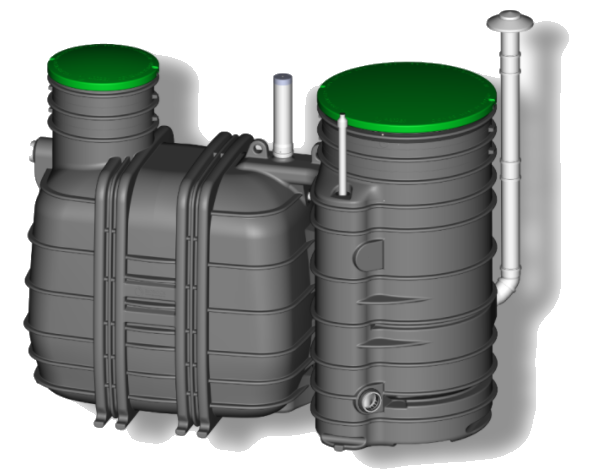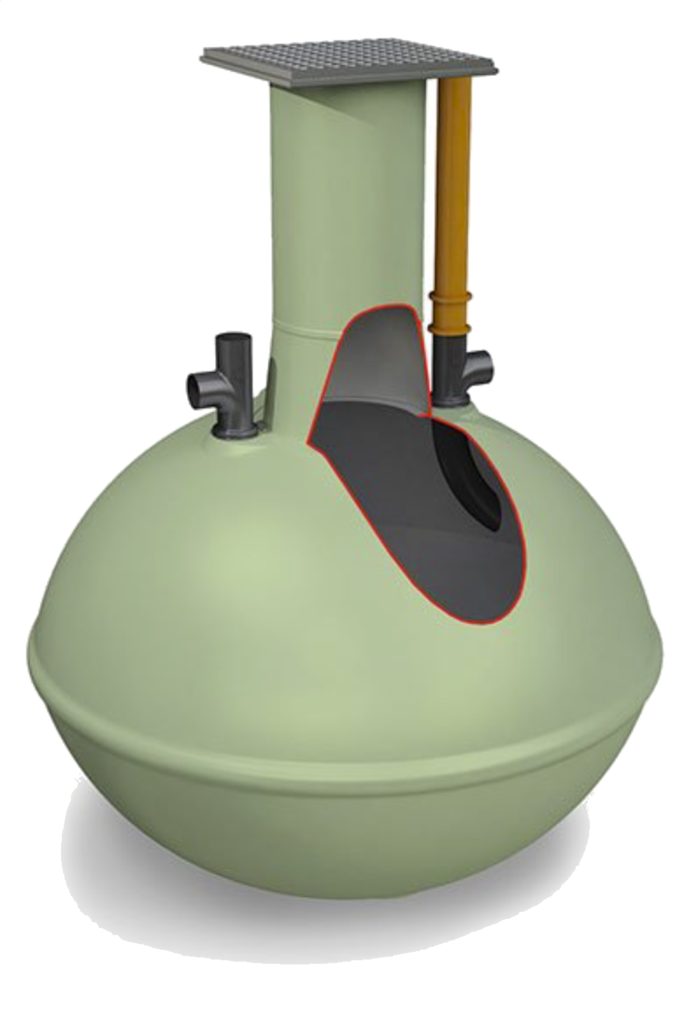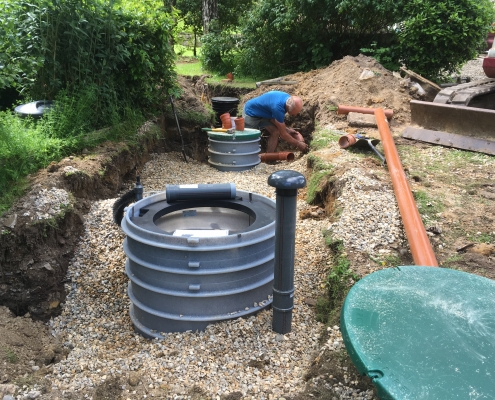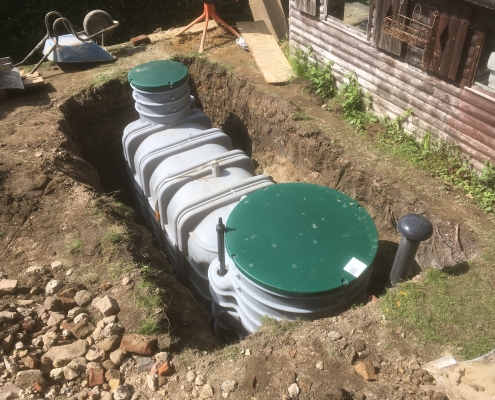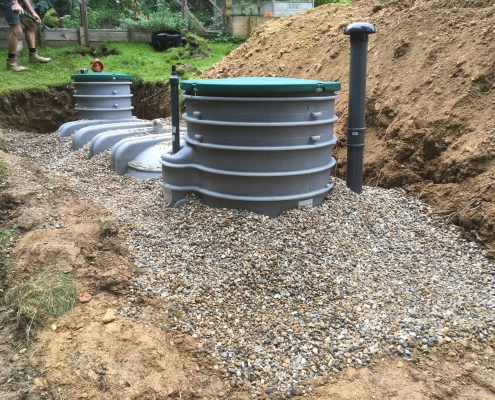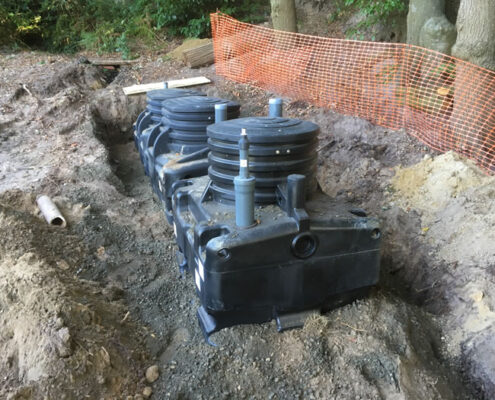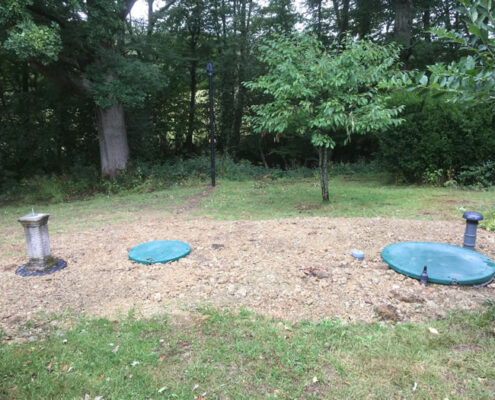SEWAGE TREATMENT PLANTS
What is a sewage treatment plant?
A sewage treatment plant is a system that holds sewage in an input tank allowing water to overflow into a treatment plant where water is treated allowing clean water output at gravity feed or pumped into the water course, stream, ditch or drainage field.
What is the difference between a sewage treatment plant and a septic tank?
The difference between the sewage treatment plant and a septic tank is:
A sewage treatment plant treats all water flowing through the system.
A septic tank has foul water running off from the tank into the drainage field or soakaway causing increasing poor pollution to the ground and the environment.
TWO DIFFERENT SYSTEMS
Non air-blown vs an air-blown system
With a non air-blown and non electrical treatment plant like the Biorock system the wastewater purification process is completely biological using the same principles encountered in nature. Unique media are responsible for degrading the pollutants within the tank and purifying the wastewater before it is discharged. You can even use the resulting water for your irrigation. This is a great method of recycling your wastewater.
- Non-electrical system results in savings on your energy bills
- Low maintenance and long emptying periods for sludge (3 to 4 years)
- Silent running – no irritating blown air pump running 18 hours a day
- Mechanical system using air from the atmosphere only
- No electrical breakdowns
- All systems can withstand long periods of absence
- Superb clean water properties at output to any water course


